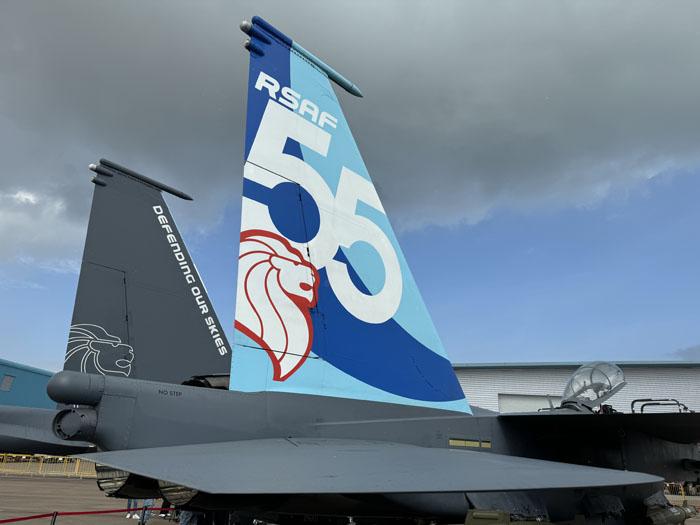
As the Republic of Singapore Air Force (RSAF) continues modernizing, the spotlight at the Singapore Airshow will naturally fall on the platforms, with several major questions yet to be answered: How many more—and of which variant—of the Lockheed Martin F-35 will Singapore buy to replace F-16s? Which interceptors might the city-state add to an already bristling air and missile defense complex? And what will replace aging fleets of Israeli-made uncrewed aircraft systems?
But the relevance of any of these platforms themselves may depend on how each fits into the larger solution for Singapore’s declining population. With an aging society and falling birth rate, the manpower available for the Singaporean Armed Forces is expected to drop by almost one-third by 2030, according to the lead article in the December 2023 issue of Pointer, the military’s in-house professional journal.
The long-standing demographic trends—including a national fertility rate of 1.1, or barely half the rate needed to keep the population level—has driven Singapore’s domestic industry to turn to immigrants to address a widening workforce shortfall. Non-citizens now number almost one-third of a population of 5.5 million. But back-filling manpower shortages with immigrants is not an option for the domestic military.
As a small state surrounded by larger, competitive neighbors, the Singaporean Defense Ministry has turned to a familiar solution for offsetting personnel shortfalls: superior technology.
“Declining manpower levels is an issue we believe technology can help us deal with,” Maj. Gen. Kelvin Khong, Singapore's air force chief, told reporters in a written statement released Feb. 15.
Fifteen years ago, the RSAF replaced a fleet of more than 60 A-4 Skyhawks with 40 more capable F-15SGs. The trend is likely to continue as the F-35 slowly supplants Singapore’s fleet of nearly 60 F-16s. Twelve 12 F-35Bs have been ordered so far and more of those—or a switch to cheaper F-35As—are expected to follow but in lesser numbers overall.
“The F-35 with its advanced capabilities—such as advanced sensors and communication suites—will work together with our multi-role F-15SGs to enhance the RSAF’s warfighting edge in contested threat environments,” Khong added.
Singapore’s declining population adds pressure as the mission of the RSAF expands. Recent conflicts from the Caucasus to Ukraine to the Middle East have emphasized the significance of the so-called “air littorals,” a low-altitude region where low-cost drones and one-way attack munitions create new challenges for establishing freedom of maneuver for ground forces.
“Conventional airpower capabilities are still important, but we cannot neglect the emerging domain of the air littoral,” Khong said. “We need to build up muscles to be innovative and to have the ability to rapidly prototype and operationalize new capabilities.”
Challenges also present new opportunities. The military’s pursuit of superior technology traditionally drove Singapore to rely on foreign partners. But the answers to the RSAF’s manpower and air littoral capability shortfalls could be found domestically. The result could make Singapore a new innovator in artificial intelligence and small drones.
The RSAF’s three-year-old Smart Base concept is pushing the boundaries of automated services, including the development of an uncrewed munitions loading system for fighters and numerous drones to perform maintenance inspections and perimeter patrols. The ministry also has established the Digital and Intelligence Services branch as a co-equal service with the army, navy and air force.
As the drive to replace fleets with smaller numbers of more advanced—and expensive—aircraft continues, the RSAF soon may feel the pinch of declining capacity. So far, Singapore has publicized no requirements for an advanced UAS to complement the F-35. As the U.S. Air Force fields a new generation of Collaborative Combat Aircraft, and European and other Asian militaries develop similar concepts, the RSAF is likely to augment its shrinking combat aircraft fleets with less expensive automated warplanes.





